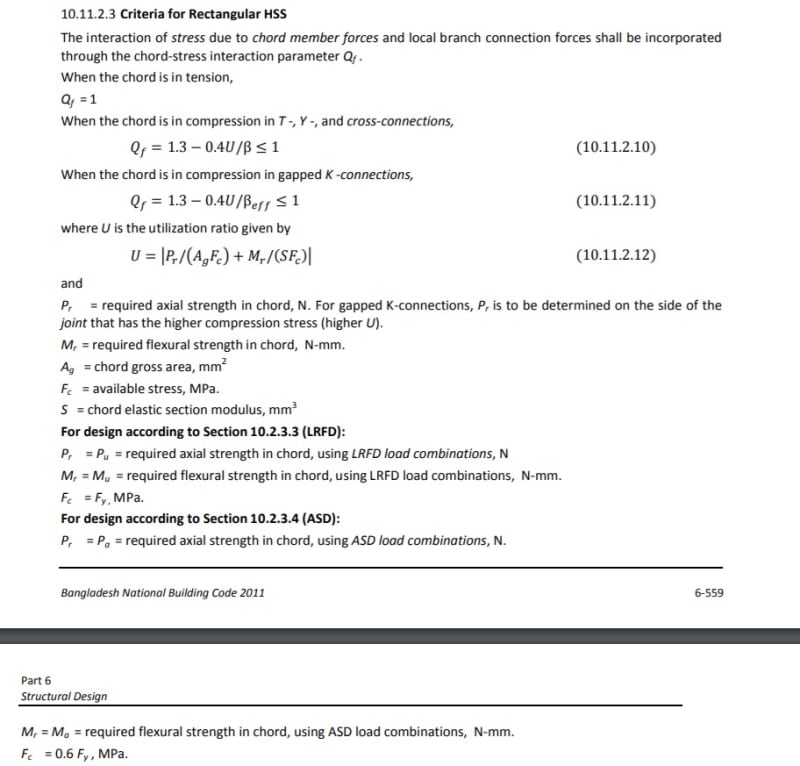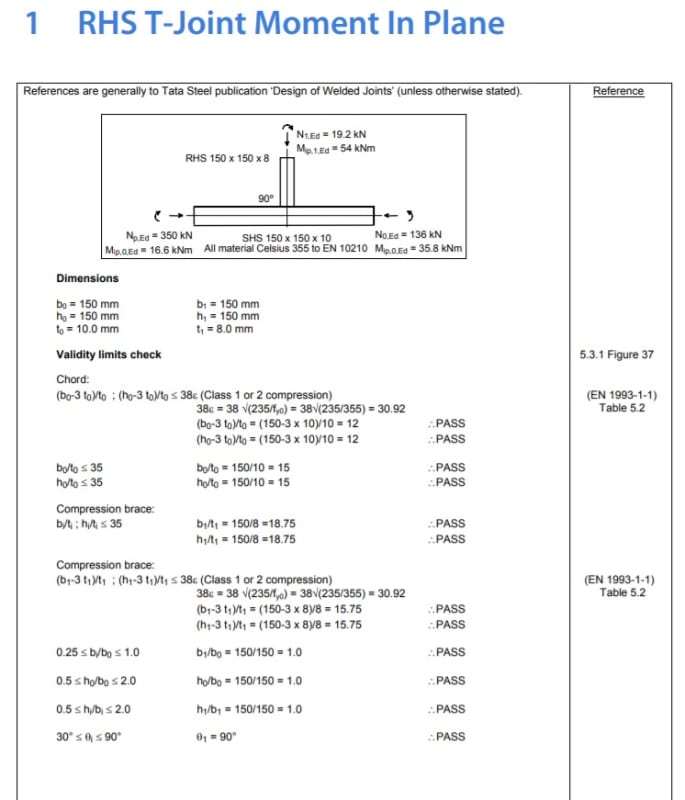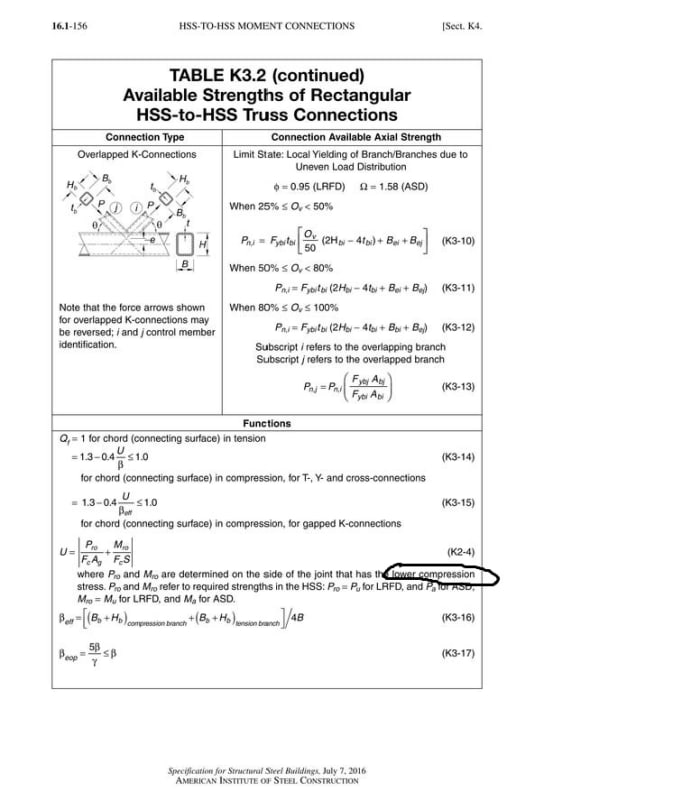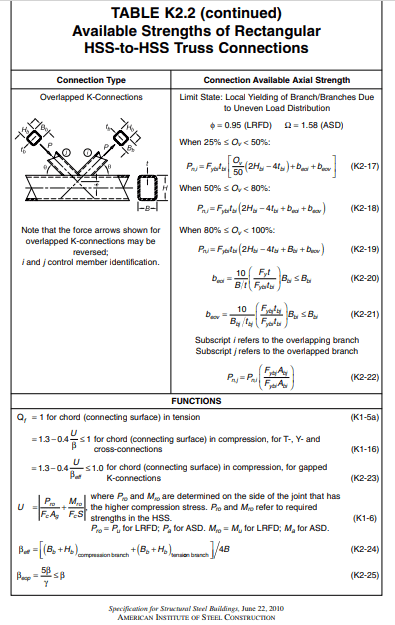Navigation
Install the app
How to install the app on iOS
Follow along with the video below to see how to install our site as a web app on your home screen.
Note: This feature may not be available in some browsers.
More options
Style variation
-
Congratulations MintJulep on being selected by the Eng-Tips community for having the most helpful posts in the forums last week. Way to Go!
You are using an out of date browser. It may not display this or other websites correctly.
You should upgrade or use an alternative browser.
You should upgrade or use an alternative browser.
HSS chord stress interaction parameter 3
- Thread starter evo10
- Start date
- Status
- Not open for further replies.
-
1
- #2
HSS properties in metric units are given in CISC Handbook of Steel Construction. Elastic section modulus is included.
I am not familiar with the terms Qf and U, but the following article may be of some help:
HSS section properties can also be found here:
Sample page:
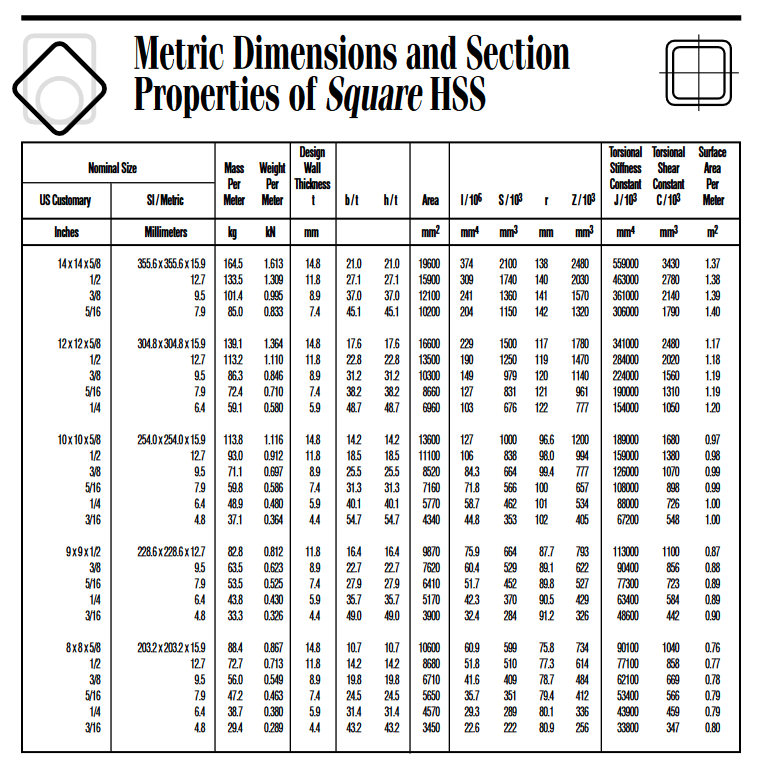
BA
I am not familiar with the terms Qf and U, but the following article may be of some help:
HSS section properties can also be found here:
Sample page:

BA
-
1
- #5
AISC says on the side of LOWER compressive stress (lower U)
The bangladesh code says on the side of the HIGHER compressive stress
in the eurocode example it says use HIGHER compressive stress
which seems to be the higher stress from the combination of axial and moment (higher U)
Eurocode higher U would result in a lower Qf which would in term lower the available Pn
weird AISC wants to use the lower U
The bangladesh code says on the side of the HIGHER compressive stress
in the eurocode example it says use HIGHER compressive stress
which seems to be the higher stress from the combination of axial and moment (higher U)
Eurocode higher U would result in a lower Qf which would in term lower the available Pn
weird AISC wants to use the lower U
-
1
- #11
- Thread starter
- #12
I missed Table K3.2. Note that table K2.2 is to calculate the available axial strength of the chord, and K3.2 is the flexural strength. Pr and Mr are the applied/required strength of the chord at the location of checking, and are to be used in the interaction equation K3-13. Apologize for my omission (of table K3.2).
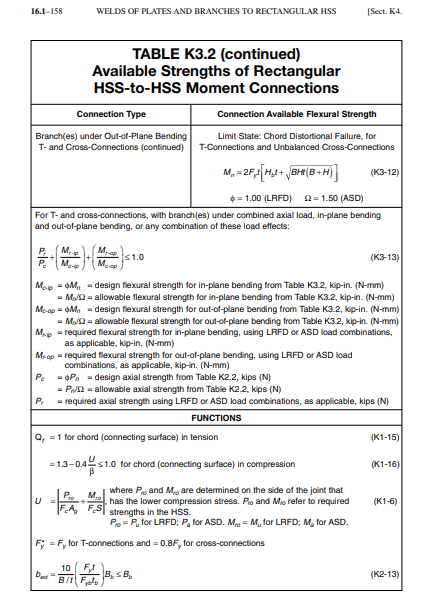

evo10,
The values of Mr and Pr are specific to your structure, determined from a frame analysis. They should be determined on the side of the joint having the higher or lower compression stress, according to Table K2.2 and K3.2 respectively. I suspect the former is correct, but better to check it both ways to be on the safe side.
BA
The values of Mr and Pr are specific to your structure, determined from a frame analysis. They should be determined on the side of the joint having the higher or lower compression stress, according to Table K2.2 and K3.2 respectively. I suspect the former is correct, but better to check it both ways to be on the safe side.
BA
r13 said:I missed Table K3.2. Note that table K2.2 is to calculate the available axial strength of the chord, and K3.2 is the flexural strength.
So far as I can see, there is no Table K2.2 in the 2016 printing. I believe Table K2.2 (2010) became Table K3.2 in 2016. It's all bloody confusing.
EDIT: Upon further reading, there is a Table K4.2 in the 2016 printing which appears to address flexural strength.
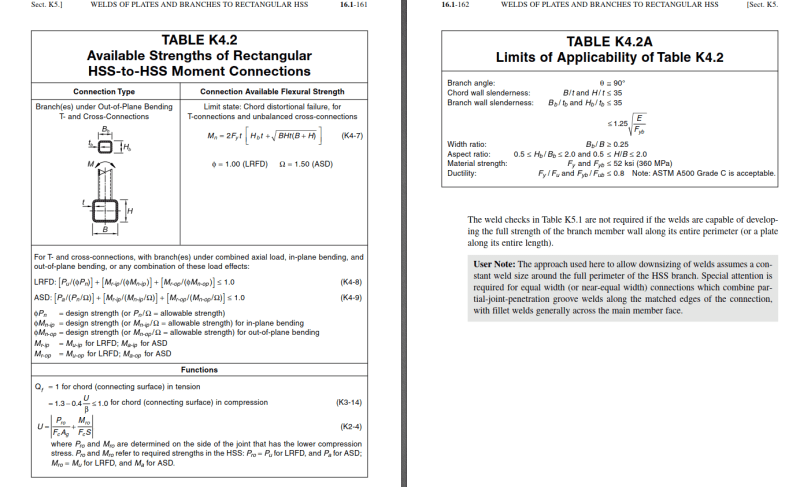
BA
BA,
All my tables are taken from 360-10. I've not checked 360-16 yet. The application for these two tables are indicated above the equations for Pn and Mn as, "Connection Available Axial Strength" and "Connection for Flexural Strength", respectively. The only thing needs to be cleared is the use of "higher", "lower" stress contraction. Logically, the use of higher stress makes better sense though.
All my tables are taken from 360-10. I've not checked 360-16 yet. The application for these two tables are indicated above the equations for Pn and Mn as, "Connection Available Axial Strength" and "Connection for Flexural Strength", respectively. The only thing needs to be cleared is the use of "higher", "lower" stress contraction. Logically, the use of higher stress makes better sense though.
- Thread starter
- #17
yea Qf is a reduction factor just like axial + moment interaction
it seems to be like interaction between existing stresses in chord and new stress introduced at the connection
that's what i was trying to clarify
so conservative guess would be to use the higher reduction value
thanks again BA and r13 you guys are always so helpful
appreciate it
it seems to be like interaction between existing stresses in chord and new stress introduced at the connection
that's what i was trying to clarify
so conservative guess would be to use the higher reduction value
thanks again BA and r13 you guys are always so helpful
appreciate it
I think the next issue is AISC doesn't explicitly state which direction of moment
maybe its both directions?
i am trying to find in the equation in the eurocode from the example above
but it seems they are using axial + bending in plane + bending out of plane
maybe its both directions?
i am trying to find in the equation in the eurocode from the example above
but it seems they are using axial + bending in plane + bending out of plane
strucbells
Structural
r13 said:BA,
All my tables are taken from 360-10. I've not checked 360-16 yet. The application for these two tables are indicated above the equations for Pn and Mn as, "Connection Available Axial Strength" and "Connection for Flexural Strength", respectively. The only thing needs to be cleared is the use of "higher", "lower" stress contraction. Logically, the use of higher stress makes better sense though.
If we take a step back and look at the definition of the Qf factor, Qf = 1.0 for chords in tension, U doesn't even come into play. Therefore you only have to perform this calculation when designing a connection to the compression chord.
Therefore, you would take the compression side stress from (+P/A) + M/S, to determine U and therefore Qf every time as this will always control and result in the higher stress value.
So yes, it would be the region of higher stress every time. At least that is how I am reading it.
- Status
- Not open for further replies.
Similar threads
- Replies
- 4
- Views
- 11K
- Replies
- 17
- Views
- 4K
- Replies
- 47
- Views
- 53K
- Replies
- 1
- Views
- 636
- Replies
- 1
- Views
- 3K

